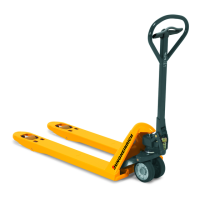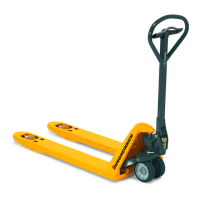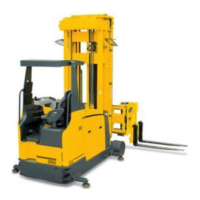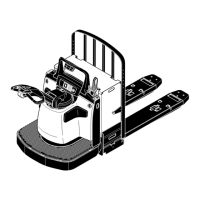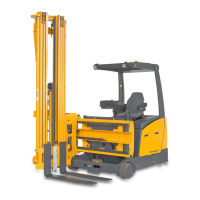4.6.1 Raising a load
Requirements
– Load correctly palletised.
– Load weight matches the truck's capacity.
– Load handler evenly loaded for heavy loads.
Z
In the case of eccentric loading, the forks are
slightly bent and twisted, which leads to variations
in the weighing results. In the case of inclinations
greater than 2°, holes and unevenness in the floor,
the accuracy of the weighing system decreases by
approx. 0.1% per degree.
Precise weighing results are obtained only when
the load centre is between the forks. A smooth flat
floor is required to ensure optimum weighing
accuracy.
Calibrated weighing system (o) (only AMW 22p
and AMW 22ps):
In the case of eccentric loading or inclinations
greater than 2°, the display is blocked. The truck
must be centrally loaded and standing on level
ground.
Procedure
• Drive the truck slowly up to the pallet.
• Push the handle (4) in the "H" direction.
• Slowly insert the load handler into the pallet until the
fork shank touches the pallet.
Z
The load must not extend more than 50 mm beyond the
fork tips.
• Lift the load handler by moving the tiller (5) up and
down until you reach the desired lift height.
Z
With rapid lift (up to 120 kg load, (t)), tiller movements
generate significantly greater lift movements.
58
11.19 en-GB

